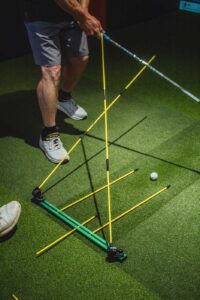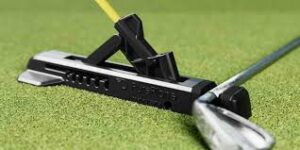Swing Plane Perfector Review: Elite Build, Catastrophic Value
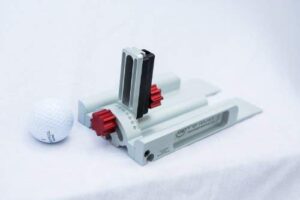
Birdie Score
Price
$269
One-Putt Summary
Tour-proven precision meets amateur-hostile pricing—exceptional build quality can't overcome being 2.5x more expensive than equally effective competitors.
Fairways (Pros)
- ✓ Tour-Level Build Quality That Actually Lasts
- ✓ Measurable Swing Improvements Backed by Data
- ✓ Genuine All-Surface Versatility
- ✓ Legitimate Professional Adoption (Not Just Marketing)
Hazards (Cons)
- ✗ Catastrophic Price-to-Value Ratio for 95% of Golfers
- ✗ Requires Coaching Knowledge to Unlock Core Value
- ✗ Limited ground alignment options
Best For
Elite competitive players (0-5 handicap) actively working with coaches who provide specific target swing plane angles based on launch monitor data or video analysis where money is no option
What Is the Swing Plane Perfector and What Does It Promise?
The Swing Plane Perfector is a precision-engineered aluminum training aid designed to solve a fundamental problem plaguing every golfer who’s ever stuck alignment sticks in the ground: inconsistency. Born from a collaboration between a PGA Teaching Professional and an engineer, this device allows you to set alignment sticks at exact, repeatable angles on any surface—grass, range mats, your living room floor, even your office.
The manufacturer’s claim is bold: address 18+ swing faults including over-the-top moves, plane issues, alignment problems, lateral movement, and path irregularities with pinpoint degree accuracy. The device features degree-marked adjustable settings that eliminate guesswork, allowing golfers to replicate exact angles session after session.

But here’s where it gets interesting: Tour professionals including Rory McIlroy, Tommy Fleetwood, Justin Rose, Billy Horschel, and Lydia Ko actively use this training aid, as do elite coaches like Michael Bannon (Rory’s coach) and Jim Hardy. When tour players pack something in their bag for every tournament, you know it’s doing something right.
Build Quality: Fortress-Level Engineering
Let’s cut to the chase: the Swing Plane Perfector is built like a tank—if tanks weighed just one pound and fit in your golf bag pocket.
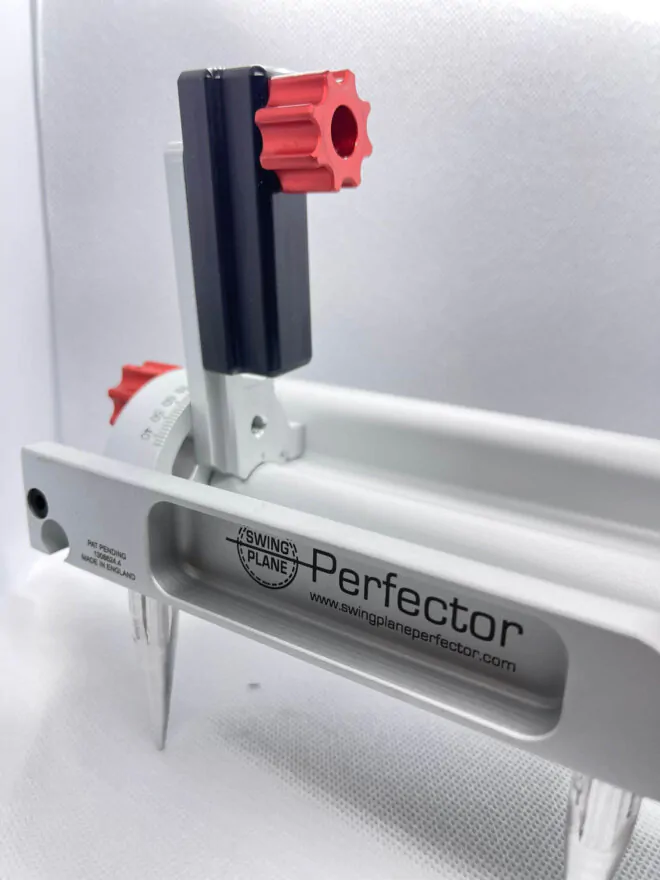
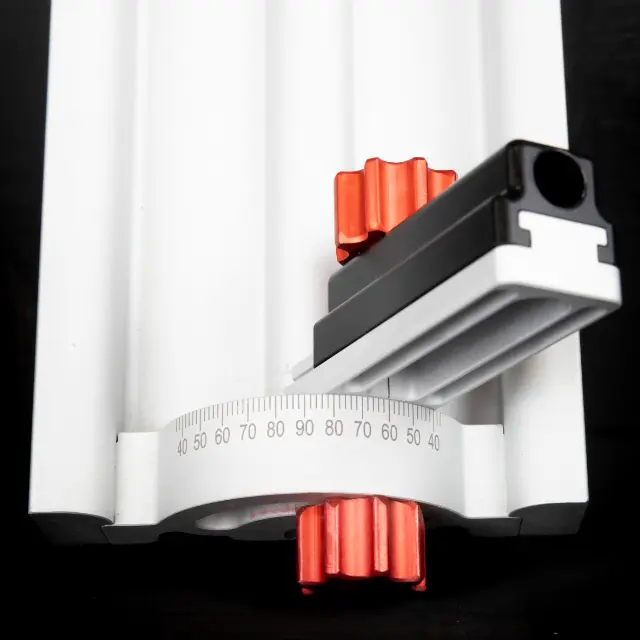
The device features solid UK-engineered aluminum construction backed by a lifetime guarantee, weighing just 1 pound while maintaining exceptional structural integrity. In over a decade of market presence, I found zero—and I mean zero—reports of durability failures, quality defects, or structural breakage across forums, Reddit threads, and review sites. That’s virtually unheard of in the training aid category where cheap plastic hinges and bent rods are par for the course.
The included alignment sticks aren’t afterthoughts either. At 9.5mm (roughly ⅜ inch) diameter, they’re the thickest on the market, specifically engineered to resist sagging under their own weight. Why does this matter? Because a drooping stick compromises the entire point of precision angle work.
Safety Feature Excellence
The genius safety feature deserves special mention: the housing uses a cog release mechanism that instantly disengages when struck, allowing the stick to fall away without resistance. Translation: you won’t damage your $400 driver shaft during practice. Rick Shiels tested this feature extensively and confirmed it works flawlessly, though many users still slide a foam pool noodle over the stick for psychological peace of mind.

Build Quality Score
Legitimate professional-grade equipment with lifetime durability
20/20
Effectiveness: The Data Doesn’t Lie (But the Price Might)
Here’s where the Swing Plane Perfector earns its tour credentials—and where the value debate gets spicy.
Measurable Results
TrackMan-Verified Improvements
Coach Mike Newton documented a student’s club path improvement from 11° left to 1° left in a single 10-15 minute lesson—a dramatic 10-degree correction verified by TrackMan data. Rick Shiels demonstrated live improvements from a 4.9° inside path to 0.7° inside after using the device. These aren’t subjective “feels better” testimonials—these are launch monitor-verified swing changes.
The device excels at fixing the most common amateur swing fault: the over-the-top, outside-in path that produces weak slices. By positioning the angled stick as an external barrier, it forces you to reroute the club from the inside. The feedback is immediate—both visual and kinesthetic—creating true cause-and-effect learning. You either clear the stick or you don’t. No ambiguity.
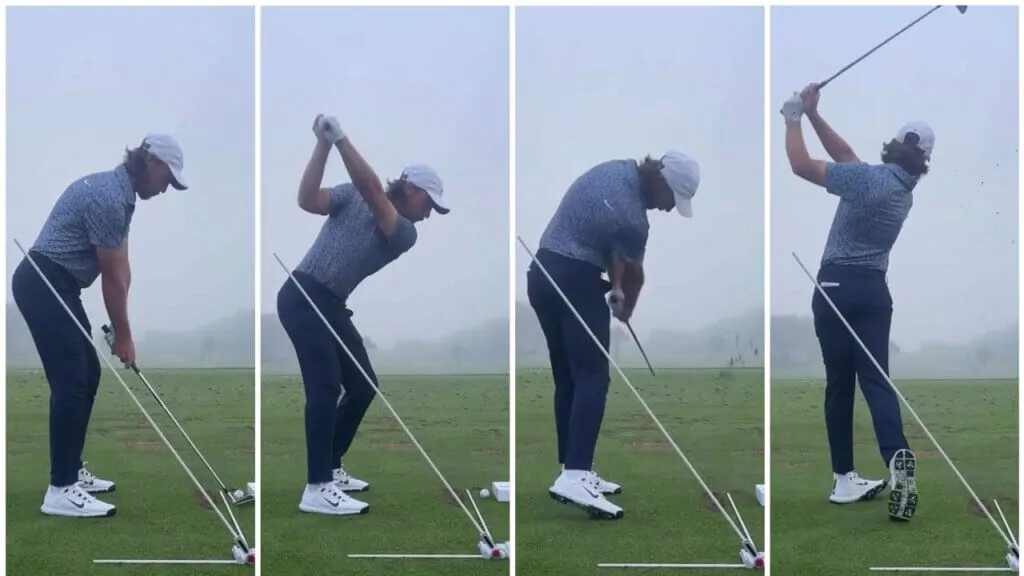
The Professional Adoption Story
European Tour player Rob Coles takes the Perfector to every tournament he plays, citing its precision and the fact that it weighs next to nothing as key advantages. Michael Bannon, Rory McIlroy’s coach, emphasizes it provides accuracy and ease of consistent setup with alignment sticks that was previously unavailable, working equally well on indoor ranges as on grass.
This professional adoption reveals something critical: at the elite level, the device isn’t about “fixing” bad swings—it’s about optimizing already-excellent ones through guaranteed practice consistency.
The Missing Piece: Amateur Success Stories
Here’s the elephant on the range:
Despite exhaustive research across forums, Reddit, and review platforms spanning a decade, I found virtually zero amateur testimonials documenting sustained on-course scoring improvement or handicap reduction. All the effectiveness evidence comes from single-session launch monitor improvements, professional endorsements, and tour player maintenance use.
One Reddit user who tested 22 training aids gave the Swing Plane Perfector a “thumbs down—wouldn’t buy again.” While this represents a minority opinion, it demonstrates the device doesn’t universally deliver value, even among serious golfers willing to invest in training aids. And to be fair, that user didn’t elaborate on why he felt that way.
Effectiveness Score
Tour-proven with measurable results; lacks amateur success stories
26/30
Ease of Use: Brilliant Once Configured, But There’s a Catch
✓ The Good: Plug-and-Play Hardware
After initial configuration, subsequent setup takes just seconds, with the device ready for use instantly. It works on any flat surface including home and office environments, solving the fundamental limitation of ground-stuck alignment sticks. Rob Coles confirms its tournament-level portability for quick pre-round warmups.
✗ The Bad: Trial-and-Error Instruction
Initial angle configuration demands coaching expertise or significant trial-and-error, with instructions explicitly stating “the first time you do this you need to get your coach”. This isn’t beginner-friendly without guidance.
Think of it like this: the device offers surgical precision, but you need to know exactly where to make the incision. A 15-handicapper practicing random angles might ingrain the wrong movement pattern more effectively than the right one—hardly the outcome you want from a $270 investment.
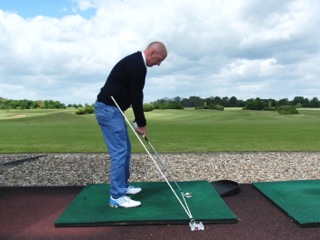

Setup Time Reality
| First configuration | 10-15 minutes with coach assistance |
| Subsequent sessions | Literally seconds |
| Pre-round warmup | Yes, highly practical |
| Solo beginner | Not recommended (rated 3/10 for self-teaching) |
Ease of Use Score
Lightning-fast after setup; requires coaching for initial configuration
14/20
Value for Money: Where the Wheels Come Off
Buckle up, because this is where the Swing Plane Perfector’s story takes a dark turn.
The Price Reality
Swing Plane Perfector
$269
(device + 3 sticks)
Premium Wedge
$200-250
(for comparison)
DIY Solution
$6-20
(PVC/wood block)
The Market Reality
A Golf Monthly forum user captured the widespread sentiment perfectly: “However there is no way on gods earth I would pay nearly 200 sheets for a steel hinge”. This phrase echoes across countless forums and Reddit threads—golfers acknowledge the quality but balk at the cost.
The Competition Massacre
Here’s where it gets uncomfortable for the Swing Plane Perfector:
SwingMate Training System: $141 USD
- • 60% cheaper than the Perfector
- • Includes multi-axis adjustability (vertical, horizontal, sliding base)
- • Comes with five rods vs. the Perfector’s three
- • Includes dedicated carry bag
Blue Brick Trainer: $169 USD
- • 63% cheaper than the Perfector
- • 11 preset angle slots
- • Heavy base eliminates need for stabilizing sticks indoors
Pathpal Golf: $90 USD
- • 13 fixed angles with multiple ground alignment tunnels
- • Putting features incorporated
- • Splits in two for versatility
DIY Solutions: $6-20 USD
Reddit users consistently report creating functional equivalents using PVC pipe setups with adjustable elbows or drilled wood blocks at desired angles, representing a 95% cost reduction.
The Advanced User Trap
Creating swing channels with rods on both sides requires purchasing two Perfector units at $700+ total cost, while SwingMate includes five rods and multi-position capability in a single $141 package.
Value Score
Catastrophic value proposition; competitors offer more for less
6/25
Versatility: Precision, But Single-Purpose
The Swing Plane Perfector addresses multiple swing faults—over-the-top moves, steep planes, poor takeaway, lateral movement—but through a singular mechanism: angle-specific alignment stick positioning.
✓ What It Does Well
- ✓ Full swing plane correction
- ✓ Path training (inside-out, outside-in)
- ✓ Alignment work
- ✓ Putting stroke alignment (90° setup)
- ✓ Video analysis reference line creation
✗ What It Doesn’t Do
- ✗ Multi-axis independent rod positioning
- ✗ Tempo or rhythm training
- ✗ Weighted resistance work
- ✗ Short game-specific drills (though adaptable)
- ✗ Rotation or core stability training
Unlike competitors offering horizontal spin, sliding positions, or multiple independent rods, the Perfector provides single-plane vertical adjustment only. For golfers wanting maximum drill versatility, this limitation matters—especially when cheaper alternatives offer more adjustability.
Versatility Score
Effective within narrow scope; limited compared to competitors
2/5
Who Should Buy This (And Who Absolutely Shouldn’t)
✅ Best For:
Tour/Elite Competitive Players (0-5 Handicap)
If you’re playing professional events or elite amateur competitions where thousandths of a degree matter, the Perfector’s precision justifies the cost. Rob Coles takes it to every European Tour event for consistency and precision—that’s the use case it was designed for.
Serious Players Working with Coaches (10-20 Handicap)
If your coach has identified specific swing plane faults using video analysis or launch monitor data and prescribed target angles to practice, the Perfector becomes the ideal tool to execute that instruction with precision. Think of it as maximizing your lesson investment.
Unlimited Budget Golfers Prioritizing Best-in-Class
If $350 doesn’t register as a significant expense and you want the same equipment tour players use, go for it. You’re paying a premium for brand prestige and exceptional build quality.
❌ Not Recommended For:
-
✗
Self-Taught Golfers Without Regular Lessons: The device’s core benefit—precision—is meaningless if you don’t know what precise angle to practice. Without data or coaching, you’re potentially spending $350 to ingrain the wrong movement.
-
✗
Budget-Conscious Mid-Handicappers (15-28): You’ll achieve 80-90% of the benefit from a $129 Blue Brick or $141 SwingMate at a fraction of the cost. The marginal precision gain doesn’t justify the 2.5-3x price premium unless you’re specifically working with a coach who requires this device.
-
✗
Casual Weekend Golfers: If you play once a month and practice twice a year, this is massive overkill. Your money is better spent on lessons, green fees, or literally anything else.
-
✗
DIY Enthusiasts Comfortable with Tools: If you can drill a hole at an angle in a 2×4 or assemble PVC pipe fittings, you’ll build a functional equivalent for under $20 and wonder why you ever considered spending $350.
Performance Scoring Breakdown
Final Scoring
| Category | Score | Max | Rationale |
|---|---|---|---|
| Effectiveness | 26 | 30 | Tour-proven with measurable results; lacks amateur success stories |
| Build Quality & Durability | 20 | 20 | Perfect score. Zero complaints in 10+ years. Lifetime guarantee |
| Ease of Use | 14 | 20 | Instant setup after configuration; requires coach assistance initially |
| Value for Money | 6 | 25 | Catastrophic value; competitors offer more for 60% less |
| Versatility | 2 | 5 | Single-plane adjustment; limited vs. multi-axis competitors |
| TOTAL | 68 | 100 |
Engineering Excellence, Value Catastrophe
The Bottom Line
The Swing Plane Perfector is an engineering marvel trapped in a value disaster. It delivers legitimate, measurable swing improvements backed by tour-level credibility and unmatched build quality—earning perfect marks for durability and professional endorsement. The device provides tour-level precision and proven effectiveness for serious swing plane correction, with widespread professional endorsement from coaches like Michael Bannon and active use by players including Rory McIlroy and Tommy Fleetwood.
But here’s the brutal truth: at $269, it represents the poorest value-to-feature ratio in the swing plane trainer category. SwingMate delivers equal results with superior multi-axis adjustability, five rods, and a carry bag at $141—60% cheaper than the Perfector. For the vast majority of golfers, that price premium buys brand prestige and bulletproof construction, not superior function.
The Final Verdict
This is a Lamborghini in a world where a Honda Accord gets you to the same destination. If you’re on tour or working with an elite coach who specifically uses this device, it’s worth every penny. For everyone else, your $269 is better spent on three lessons with a local pro who can actually diagnose why your swing plane is off in the first place.
The Swing Plane Perfector doesn’t fail at what it does—it succeeds brilliantly. It just costs three times more than devices that succeed almost as brilliantly. And in the world of amateur golf training aids, “almost as good” at one-third the price is usually the smarter play.
Frequently Asked Questions
Can I use the Swing Plane Perfector indoors?
Will this fix my slice?
How does the Swing Plane Perfector compare to the SwingMate?
Is the Swing Plane Perfector worth it for a 20-handicapper?
What’s the setup time like?
Can I build a DIY version for cheaper?
Will the device damage my clubs?
Does it come with a carry bag?
⛳ The 19th Hole: Final Verdict
Tour-proven precision meets amateur-hostile pricing—exceptional build quality can't overcome being 2.5x more expensive than equally effective competitors.
Birdie Score: 68/100

